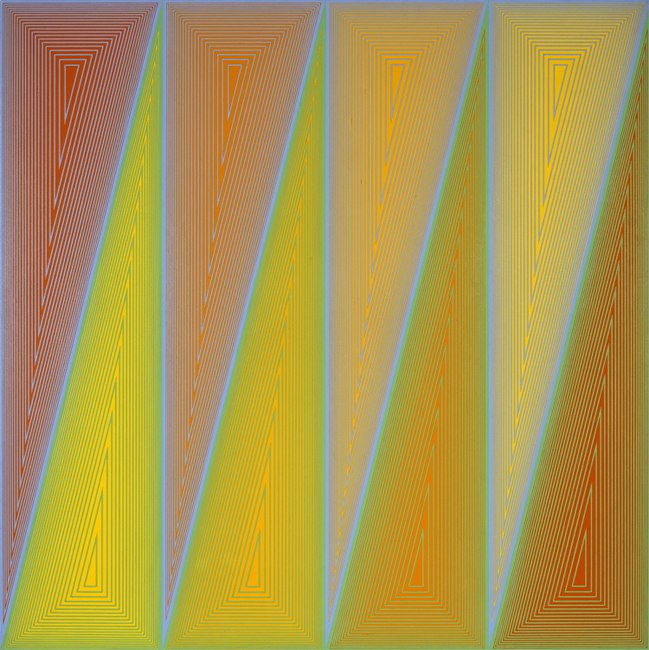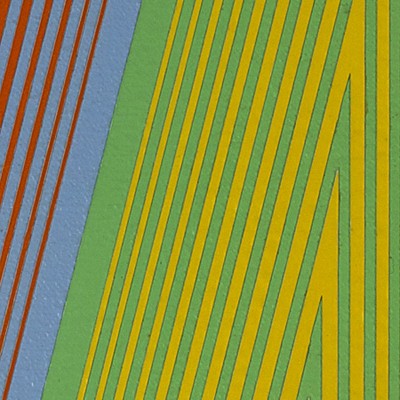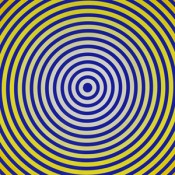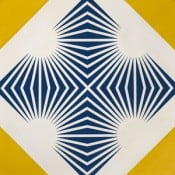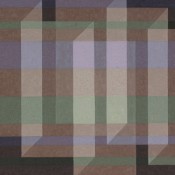Explore
![]()
Richard Anuszkiewicz
(American, born 1930)
Solidification, 1969-70
acrylic on canvas, 48 x 48 inches
Art © Richard Anuszkiewicz/Licensed by VAGA, New York, NY
In 1954, shortly after receiving his degree from the Cleveland Institute of Art, the young realist painter Richard Anuszkiewicz moved to New Haven, Connecticut to pursue graduate studies at Yale University. There he studied with Josef Albers, a former instructor at the revolutionary Bauhaus school in Germany, who promulgated rigorous theories of color and design based on the emerging psychology of perception. These theories provided the firm basis of Anuszkiewicz’s bold experiments in color abstraction. By the early 1960s he was exclusively painting patterns of contrasting colors to stimulate profound reaction in the viewer. Visual perception, a combination of physiological and psychological processes, has remained the ultimate subject of Anuszkiewicz’s vibrant work ever since.
Anuszkiewicz was not alone in exploiting color and design for perceptual drama. An international movement in perceptual abstraction emerged by the 1960s, culminating in the Museum of Modern Art’s exhibition The Responsive Eye, which traveled extensively throughout the United States. Richard Anuszkiewicz, Hannes Beckmann and Tadasky became leading American figures of what the press nicknamed “Op Art,” short for Optical Art. Albers, whose work was prominently exhibited amid those of his students, gained renewed recognition as the progenitor of the radical movement.
Solidification is a classic example of Anuszkiewicz’s work, which intersperses linear sequences of complementary colors—opposing hues on a color wheel– to activate retinal vibrations and other anomalous effects of the over-stimulation of our vision. Ironically, the surface of this painting never completely solidifies in our mind’s eye, but remains elusive due to the incremental color shifts throughout the restless composition. Although once inextricably associated with the 1960s, the art of Anuszkiewicz and his Op contemporaries continues to engage us on its own terms, challenging the limits of our perception in the process.
The ideas I work with are essentialy timeless. . . and if color or form is visually exciting in any profound sense, it will be that way ten or twenty years from now also.
Other Works by Richard Anuszkiewicz
No related posts found
